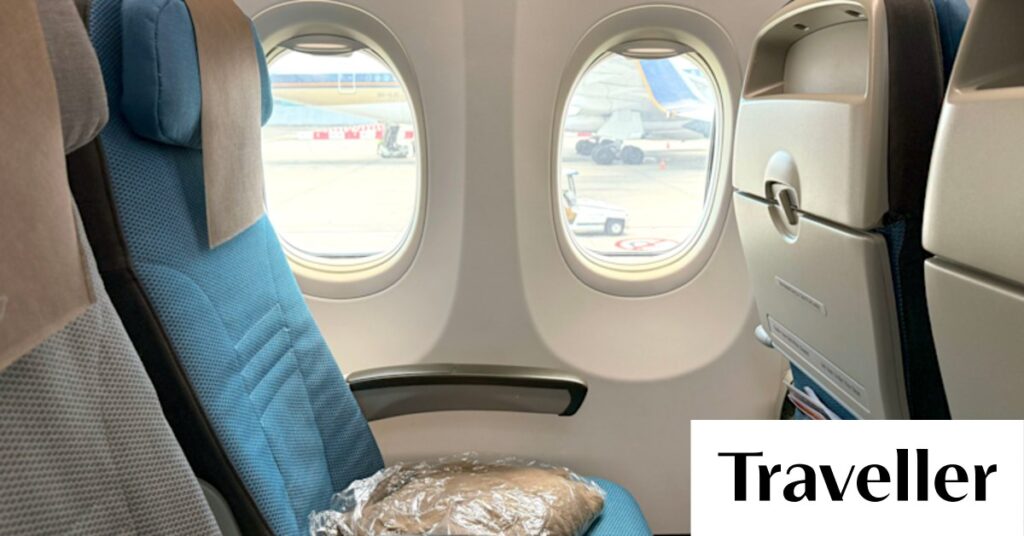
The Boeing 737-800, a relic from the former regional carrier Silk Air, stands out in the Singapore Airlines fleet for its limited legroom and lack of modern amenities. Despite these drawbacks, the airline’s renowned service remains a highlight for passengers. This aircraft, with its 3-3 seating configuration, offers the smallest seats in terms of legroom across Singapore Airlines’ offerings.
With a seat width of 17.7 inches (45cm) and a pitch of just 30 inches (76cm), the Boeing 737-800 NG provides the least legroom among Singapore Airlines’ planes. This plane is also the only one in the fleet where business class seats do not lie flat, marking it as an outlier in terms of passenger comfort. Despite these limitations, the airline’s attentive service continues to uphold its reputation.
Entertainment and Technology Limitations
Passengers on the Boeing 737-800 NG will find a universal power outlet and a USB-A port under the seat, shared between two passengers. However, the absence of seat-back entertainment screens is a notable deviation from the norm. Instead, a subset of the KrisWorld Entertainment system is accessible via personal devices, though this requires passengers to bring their own headphones or use the provided ones to listen to one of the 12 available channels.
Unlike more modern aircraft, this plane does not offer Wi-Fi, adding to the list of technological limitations. Despite these shortcomings, the crew’s efficiency and friendliness offer some compensation, as demonstrated when a crew member promptly assisted with overhead luggage storage.
Culinary Offerings and Service Excellence
Singapore Airlines is known for its high-quality service, and the Boeing 737-800 NG flight is no exception. Although the spiced chicken in creamy tomato gravy was unavailable by the time the cart reached the back of the plane, the fish arrabbiata pasta and barley, cucumber, and smoked salmon salad were well-received. Complimentary wines, beers, and spirits were served, followed by individual tubs of ice cream.
Interestingly, there was no menu card available in the seat back or on the limited KrisWorld entertainment selection, a minor inconvenience for passengers accustomed to detailed meal information.
Sustainability and Future Fleet Plans
In line with its commitment to achieving net zero carbon emissions by 2050, Singapore Airlines plans to phase out the older Boeing 737-800 NGs. The airline aims to replace them with the more fuel-efficient 737-Max 8 by October. The newer aircraft will feature entertainment screens and Wi-Fi, with business class seats that lie flat, aligning with the rest of the fleet’s standards.
Currently, the Boeing 737-800 NG operates on routes from Singapore to Penang, Kuala Lumpur, and Kathmandu. The transition to the 737-Max 8 will enhance passenger experience and contribute to the airline’s sustainability goals.
Conclusion: A Mixed Experience
For passengers flying from Sydney or Melbourne, a return ticket on the Boeing 737-800 NG costs around $1600. While the flight’s duration of five hours is manageable, the lack of modern amenities makes it less comfortable than other Singapore Airlines experiences. Nevertheless, the airline’s exceptional service and quality food offerings partially compensate for the aircraft’s shortcomings.
As Singapore Airlines moves towards a more modern fleet, passengers can look forward to enhanced comfort and technology on future flights. The Boeing 737-800 NG, while currently a part of the fleet, is a reminder of the airline’s evolution and commitment to improving passenger experience.






